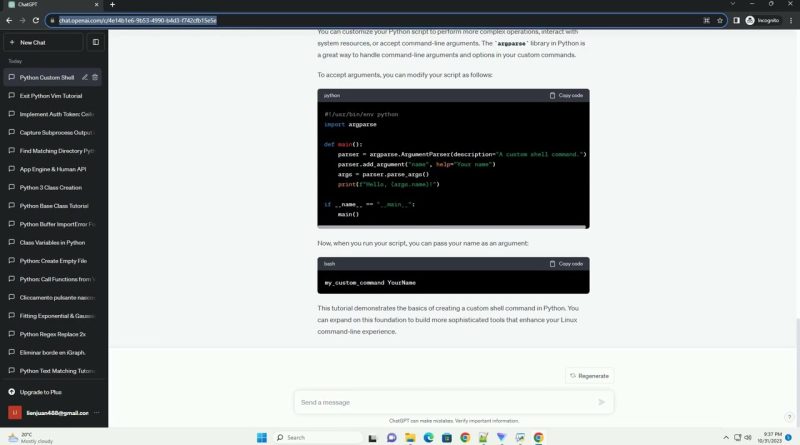How to use python to write a linux shell command
Download this code from https://codegive.com
Writing a Linux shell command in Python can be a powerful way to automate tasks, interact with system resources, and extend the functionality of your Linux environment. In this tutorial, we’ll explore how to use Python to create a custom shell command by creating a simple script and integrating it with your command-line interface.
Before you begin, ensure you have the following prerequisites:
A Linux system: This tutorial assumes you’re using a Linux-based operating system, such as Ubuntu, CentOS, or Debian.
Python: Make sure Python is installed on your system. You can check by running python –version or python3 –version.
Let’s start by creating a Python script that will serve as your custom shell command. In this example, we’ll create a script that prints a message to the console when executed as a shell command.
Create a file named my_custom_command.py using your preferred text editor or with the following command:
Now, open my_custom_command.py with your text editor and add the following code:
In this script:
Save the file and make it executable with the following command:
To make your Python script accessible as a shell command from any directory, you need to add the directory where the script is located to your PATH environment variable.
Assuming your script is located in the /path/to/your/script/ directory, add the following line to your shell configuration file (e.g., ~/.bashrc for Bash or ~/.zshrc for Zsh):
Reload your shell configuration or restart your terminal to apply the changes:
Now that your Python script is in the PATH, you can run it as a shell command from anywhere in the terminal.
Simply type the script’s filename without the .py extension to execute it:
You should see the output:
Congratulations! You’ve successfully created and executed a custom shell command in Python.
You can customize your Python script to perform more complex operations, interact with system resources, or accept command-line arguments. The argparse library in Python is a great way to handle command-line arguments and options in your custom commands.
To accept arguments, you can modify your script as follows:
Now, when you run your script, you can pass your name as an argument:
This tutorial demonstrates the basics of creating a custom shell command in Python. You can expand on this foundation to build more sophisticated tools that enhance your Linux command-line experience.
ChatGPT
by pyGPT
linux foundation



